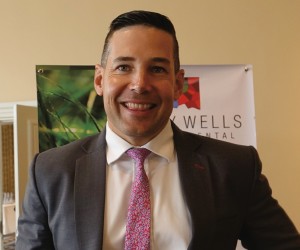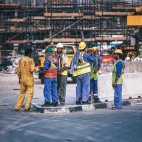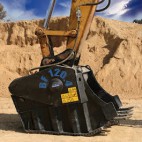The lack of local beneficiation in South African mining has a direct impact on the economic development of South Africa and, if adopted appropriately, could add significant value in terms of sustainability within affected communities, says Gerick Mouton, Vice President and Executive Head: Capital Projects for Ivanplats
Downstream value addition has the potential to contribute towards education, employment, enterprise and supplier development, local economic development and bulk infrastructure. To date, the downstream beneficiation debate has been mainly a broad socio-economic one.
Mouton, a mechanical engineer by profession, has extensive knowledge in strategic project development and executing capital projects in challenging social environments. He has completed various capital projects in Botswana, Ghana, Madagascar and the Democratic Republic of the Congo (DRC), and has over 20 years experience on the African continent.
In addition to his degree in engineering, Mouton recently completed his Masters in Philosophy, giving him a broader understanding of some of the social issues that have plagued mining companies and communities, who are often left in vulnerable situations during the life of the mine, and especially post closure. Leadership interviews Mouton about his views on mining in South Africa:
You often talk about the importance of collaboration when approaching new mines, how you change mindsets to look beyond the engineering aspect, into the social side of things?
It has been tough, but I must congratulate the team of engineers and designers we’ve had, especially those from DRA Global. Once everybody had visited the mine site they realised and saw the importance of the social dynamics and I’m glad to say today that if you meet any of those, it doesn’t matter if it’s a mechanical engineer or electrical engineer they will tell you (if you talk Platreef projects) that they learnt something in terms of social upliftment during those studies, which is great.
When doing business in Africa, what is the biggest lesson you learnt?
Collaboration with government is vital, and as I said earlier they tend not to listen, the mining companies, but once you sit down and reach a compromise the collaboration can start and it will go a lot easier. There are always two sides —the mining companies and governments—so it is important to listen and understand what the company is there for, what they’re going to do and what benefits they’re going to bring to the local area and community and so forth. You need support to make sure you can get the mine up and running.
The Internet of Things is a big talking point at the moment, how much further can we automise in the future?
Our ore body lends itself to highly mechanised mining and we’re going to use remote control machines underground, especially in our drills and so forth, so that’s already part of our planning. You need a different operator, and the mindset to apply those methods, but that’s in our favour, because we’re developing the mine, and we’re training those people. We’re bringing those technologies to the table and we will make sure the people who are going to operate it will be trained accordingly, but that is the future. However, it conflicts with the fact that we’re not going to employ so many people on the mine, so then you have to come up with a different strategy as to what to do about employment opportunities, indirect employment and so forth.
In terms of mine closure what are some of the innovative ways you look at for post-use?
Even though we’re in development we’re already looking at mine closure. We have a massive ore body so you can probably mine there for 100 years or longer. Our ore body, again because it’s so thick and flat and we’re mining it with a long-hole stoping mining method, when we back-fill it, we take the tailings and we add a binder and we put it into a stope. It equates to about 60% of the tailings that would have gone to the TSF (Tailings Storage Facility) now going back underground. So during operations we already rehabilitate the mine in a certain sense. And the fact that we’re underground obviously reduces the social environmental impact on top of surface, and the fact that we have the ore body 360 degrees around the shaft infrastructure means less waste. At the end of the day the ore body tells you what to do, and in our case we’re obviously lucky that we have an ore body that we can actually maximise and optimise.
What are your key development points in Africa for the business?
Yes, our other projects in the DRC are ongoing, Kamoa-Kakula on the copper side, and then you have Kipushi Zinc which will probably be a development point if everything goes well. We’re refurbishing that mine as we speak. We’ve dewatered it and we’re trying to get the mine into operation as soon as possible. If you look at the commodities that Ivanhoe has got, it’s the three commodities that everybody needs so we’re really blessed with all the commodities in the projects we do have.
Where are the key demands for platinum in the motor industry after ‘Diesel Gate’?
The diesel saga obviously took a knock on the platinum side but it has recovered. People think diesel is ugly and dirty, but as long you apply the catalyst you shouldn’t have any issues like that. Seventy five percent of the Platinum Groups metals (PGM’s) go towards catalysts. There’s big talk about electric vehicles and so forth, in my opinion we are probably going to see a hybrid solution within the next 20 to 25 years before we go full electric. There will still be applications for PGM’s and I’m not even touching on the jewellery side, which is about 30% of the ounces.
Platinum demand in Asia took a bit of knock in 2017/2018, are we are likely to see an uptick from there in China?
Last year was a bit tough for the jewellery industry in China, the Platinum Guild International are doing massive work in terms of marketing in China. They’re focusing on the tier 2 and tier 3 cities now, which are smaller cities, and to roll out jewellery marketing strategies in those cities.
Finally, water security is often a problem in remote, dry areas. How do you mitigate that risk?
We have more than enough water in the Congo but in South Africa the Platreef Project is a water scarce area so obviously we need to make sure that we have a bulk water source that won’t dry up. We’re in discussions with certain parties around that, and we’ve done a total optimisation study in terms of recoveries to maximise water recycling as part of the operation, so yes, it’s going well.






